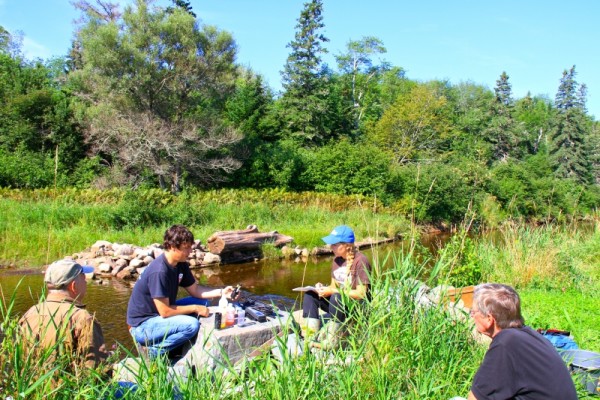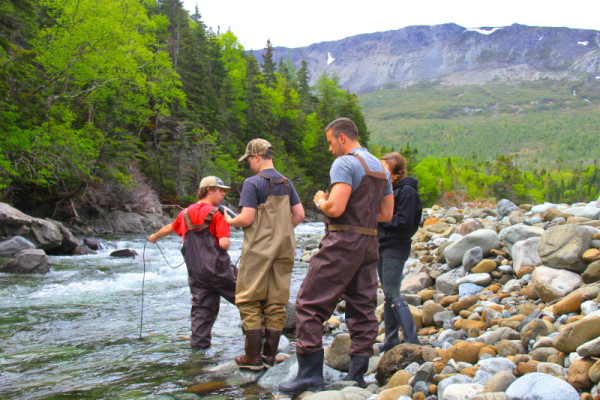Community-based solutions to watershed health
Water is a local issue. It’s what you drink and where you play. It grows local food and supports tourism. When watershed health is threatened by changing climate or industrial development, local residents are often the most active in demanding the protection of nature. Sarah Weston, coordinator for Halifax-based CURA H2O, is working on community-based solutions to watershed health in Atlantic Canada. We caught up with her to hear about watershed health on the east coast, and what she thinks about WWF-Canada’s recently launched Watershed Reports website.
Tell me about the work that you lead at CURA H2O.
There are community watershed organizations all across the Atlantic Provinces and across Canada working to improve the health of their water. They are grappling with missing information and trying to address threats that are increasingly complex.
CURA H2O is a collaborative project between community stewardship partners, governments, First Nation communities, and universities to coordinate water quality monitoring in Atlantic Canada. CURA H2O provides equipment and training and a centralized database that can be used for more effective watershed management. Regional networking can help connect stakeholders who are working on the same issues (ex: agricultural runoff) and research and consulting support can raise the ability to address emerging issues like fracking.
Why is monitoring so important?
It’s important to know what the issues and threats are in regions. This can help us develop long-term solutions that could include regulation or behaviour changes.
Threats vary from region to region. In some areas it’s farming and agricultural runoff, in other areas, it is gold mining, aquaculture, mink farming, acid rain, and urban development.
Monitoring also allows us to watch changes over time. Take farming runoff as an example. Local residents will start to notice changes and problems, the community starts monitoring and tracking water quality and other metrics, new regulations are developed in reaction, and changes are made. Monitoring plays a big role in making sure a problem is identified and a solution is developed.
Do you have a good example from the groups you work with in the Maritimes?
The Bluenose Coastal Action Foundation is a watershed organization in Lunenburg, Nova Scotia. They monitor many things, but in one project, specifically look at fecal contamination from straight pipes (properties that do not have septic and instead flush straight into the river). The group works proactively with homeowners through education and outreach to install septic systems or create a network for a shared septic.
They use monitoring results to create incentives and track how things are changing. No one knows or believes it is a problem until you can measure and demonstrate what is happening.
Why do you think working on water issues is so important?
Water abundance and quality is not just an environmental health issue but also a social justice issue. For example, the state of drinking water for First Nations communities across Canada is atrocious and needs support from all scales and peoples to become safe and accessible. Community health and access to natural resources are basic human rights and are essential to the well-being of all Canadians. This connection should not be based on economic wealth or cultural structure.
It is really encouraging to work with people who so passionately believe that water, and community action on water, are so important. To have partners like engaged fish harvesters and community volunteers, working to save species and create sustainable communities is very inspiring.
CURA H20 is a Loblaw Water Fund grantee that works on the ground to share knowledge and take action to improve watersheds. We are sharing their story as part of our launch of watershedreports.wwf.ca – a new online tool that allows you to find your watershed, learn about its health, and understand the threats in your region. Watch our Google Hangout below to find out more about this new site!



